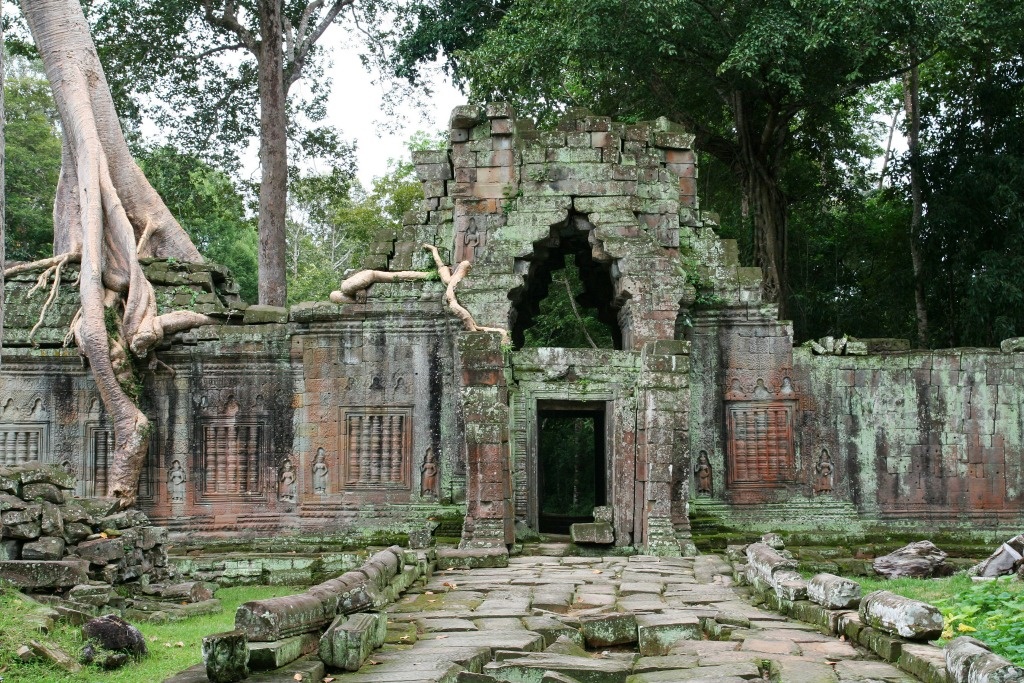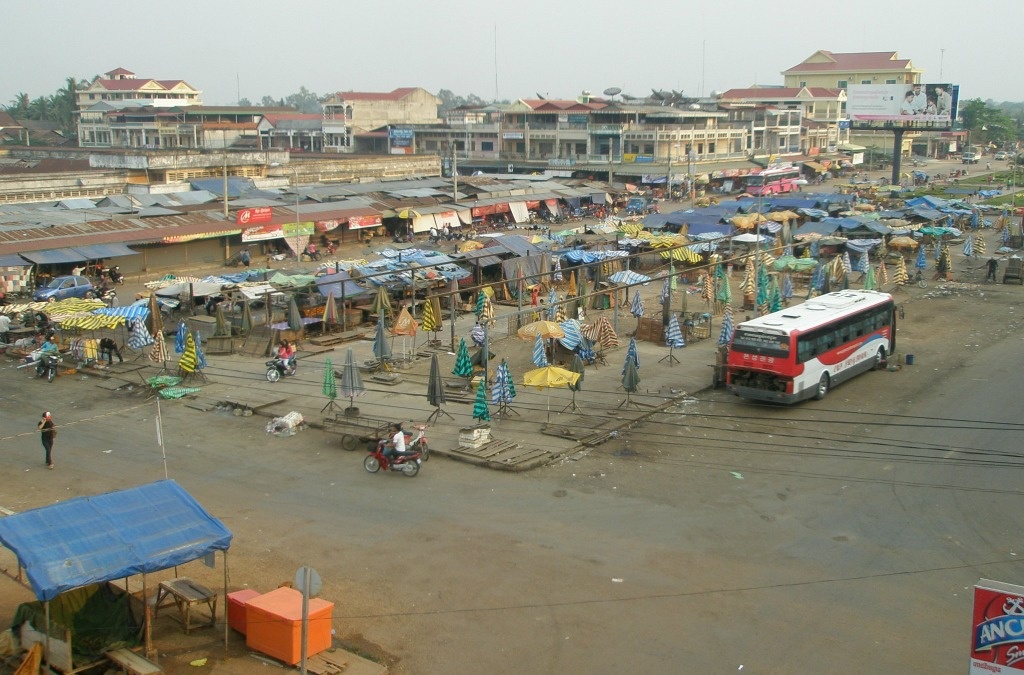CAMBODIA
TRAVEL GUIDE
Explore the enchanting allure of Cambodia with our comprehensive Cambodia Travel Guide. From the ancient wonders of Angkor Wat to the bustling markets of Phnom Penh, uncover the rich history, vibrant culture, and breathtaking landscapes of this Southeast Asian gem. Whether you seek temple-hopping adventures or serene river cruises, our guide offers essential tips and insights to ensure an unforgettable journey through Cambodia’s diverse tapestry of experience
Enchanting Cambodia Travel Guide: Your Gateway to Unforgettable Adventures
Welcome to the Enchanting Cambodia Travel Guide, your essential companion for exploring a captivating kingdom in Southeast Asia. Cambodia mesmerizes with its ancient Angkorian heritage, vibrant Khmer culture, and diverse landscapes, from Phnom Penh’s bustling riverside to the pristine beaches of the southern islands. This guide covers eight top destinations, cultural experiences, and practical tips to ensure a seamless and unforgettable journey. Whether you’re wandering through majestic temples or relaxing on tropical shores, let this guide inspire your adventure in Cambodia.
How to Travel to Cambodia
How to Get to & Around Cambodia
Everything you need to know about arriving in the Kingdom of Wonder and moving around its cities and regions.
Travel & Transport
International Arrival
Tip: Fly into Phnom Penh International Airport (PNH), Siem Reap International Airport (REP), or Sihanoukville International Airport (KOS) – $200–600 from North America, $50–200 from Europe. These are the main hubs with connections across Asia.
Why: Phnom Penh and Siem Reap serve as primary entry points with direct flights from major Asian cities.
How: Compare flights on Skyscanner ($0). Alternative land routes: bus or train from Thailand ($10–30) or Vietnam ($15–40). Overland borders require e-Arrival Card submission 7 days prior.
Domestic Transport Options
Tip: Use domestic flights ($30–100), buses/minivans ($5–30), trains ($5–15), or tuk-tuks/taxis ($1–10). Motorcycle rentals ($4–25/day) are ideal for rural exploration.
Why: Affordable buses connect major cities; motorcycles offer flexibility for countryside and islands.
How: Book buses via BookMeBus ($0). Use Grab or PassApp for rides. Carry small cash for local transport. Domestic flights link Phnom Penh, Siem Reap, and Sihanoukville.
Need to Know
Essential facts to help you plan your trip to Cambodia – from visa and currency to safety and connectivity.
Need to Know
Why Travel to Cambodia
Tip: Cambodia offers ancient temples, tropical beaches, and rich Khmer culture.
Why: From Angkor Wat’s majestic ruins to the Mekong River’s serene beauty, Cambodia blends historical wonders, lush jungles, and vibrant markets.
How: Explore temples and floating villages (€5–20), enjoy local cuisine (€1–5), and book tours via Viator (€10–40) for guided experiences.
Do I Need a Visa
Tip: Most nationalities get e-visas online ($30) or visa-on-arrival. Valid for 30 days, extendable.
Why: Ensures smooth entry and compliance with immigration rules.
How: Apply via evisa.gov.kh ($0). Carry passport valid for 6 months. Submit e-Arrival Card 7 days before arrival.
What is the Currency of Cambodia
Tip: The currency is Riel (KHR), but USD is widely used. Budget travelers spend $25–50/day.
Why: USD is accepted nationwide; riel for small change in rural areas.
How: Exchange at banks ($0) or ATMs ($1–3 fee). Carry small USD notes ($1–20). Use Wise ($0 fees) for transfers.
Is Cambodia Cheap to Visit
Tip: Cambodia is affordable, with meals ($1–4), hostels ($5–15/night), and transport ($1–10) outside Phnom Penh.
Why: Budget options in regions like Siem Reap or islands suit cost-conscious travelers.
How: Stay in guesthouses ($10–15). Eat at street stalls ($1–3). Book via Booking.com ($0) for deals.
Can I Drink the Tap Water
Tip: Tap water is not safe; bottled water ($0.50–1) is recommended everywhere.
Why: Quality varies; bottled prevents health issues.
How: Carry a reusable bottle with filter ($5–15). Buy bottled from shops ($0.50–1). Check seals.
Can I Buy a SIM Card
Tip: Purchase a local SIM for data and calls ($2–10).
Why: Affordable plans ensure navigation and communication.
How: Buy at airports or shops ($2–10). Top up via apps ($0). Choose Smart, Metfone, or Cellcard.
Practical Tips for Traveling in Cambodia
Everything you need to know before you go – from visas and money to safety and transport.
Practical Tips for Traveling in Cambodia
Visa and Documentation
Tip: Ensure your passport is valid for 6 months. Apply for an e-visa ($36) for stays up to 30 days.
Why: Simplifies entry for most nationalities and avoids long queues at borders.
How: Use evisa.gov.kh ($0). Submit Cambodia e-Arrival Card 7 days before arrival. Carry USD cash for extensions.
Currency and Payments
Tip: Use USD ($15–40/day) as primary currency; Riel (KHR) for small change. Cards accepted in cities.
Why: USD is official for most transactions; ATMs dispense USD in tourist areas.
How: Withdraw USD from ATMs ($2–4 fee). Exchange at banks ($0). Use ABA or Acleda apps for transfers.
Language and Communication
Tip: Learn phrases like “soksabai te?” (how are you?) or “arkoun” (thank you). English is common in tourist areas.
Why: Basic Khmer shows respect and helps in rural markets or villages.
How: Use Google Translate offline ($0). Buy a local SIM ($2–5) for data and Grab app use.
Safety and Dangers in Cambodia
Tip: Watch for scams in Siem Reap and Phnom Penh. Avoid unexploded ordnance in rural areas.
Why: Petty theft and landmines remain risks; caution ensures safe travel.
How: Use hotel safes ($0). Stick to marked paths in countryside. Drink only bottled water ($0.50–1).
More Safety Tips for AsiaAccommodation Options
Tip: Stay in hostels in Siem Reap ($5–15/night), boutique hotels in Phnom Penh ($25–80/night), or island bungalows ($15–50/night).
Why: Wide range from budget dorms to eco-lodges fits all travelers.
How: Book via Booking.com or Agoda ($0). Choose Pub Street area in Siem Reap or riverside in Phnom Penh.
Transportation
Tip: Use tuk-tuks ($2–5/ride), Grab rides ($1–4), or buses ($5–15). Rent scooters ($5–10/day) in Siem Reap.
Why: Affordable and flexible options connect temples, cities, and islands.
How: Book Giant Ibis or Sorya buses online ($0). Use PassApp for tuk-tuks. Wear helmets when riding.
When to Go to Azerbaijan
Plan your perfect trip with our guide to weather, festivals, crowd levels, and regional highlights.
When to Go to Azerbaijan
Best Time to Visit
Tip: Travel in spring (April–June) or autumn (September–October) for pleasant weather and vibrant landscapes.
Why: Mild temperatures (15–25°C), blooming nature, and fewer crowds make outdoor exploration ideal.
How: Book 2–3 months in advance. Pack layers for cool evenings. Avoid peak summer heat in lowlands.
Weather by Season
Spring (Mar–May): 10–22°C. Flowers bloom in Sheki and Gobustan. Light rain possible.
Summer (Jun–Aug): 25–35°C in Baku, up to 40°C inland. Best for Caspian beaches and nightlife.
Autumn (Sep–Nov): 15–25°C. Golden foliage in Qabala. Perfect for hiking and wine regions.
Winter (Dec–Feb): 0–10°C in Baku, -5 to 5°C in mountains. Skiing in Shahdag and Tufandag.
Major Festivals & Events
Novruz (Mar 20–21): National New Year – bonfires, painted eggs, folk dances. Nationwide celebration.
Baku Jazz Festival (Oct): World-class jazz in historic venues. Free outdoor stages.
Gabala International Music Festival (Jul–Aug): Classical concerts in mountains. Tickets ₼20–100.
Goychay Pomegranate Festival (Oct): Food, music, and fresh juice. Free entry.
Crowd Levels & Costs
High Season (May–Oct): Hotels +30–50%. Baku and coastal areas busiest. Book early.
Low Season (Nov–Mar): 20–40% cheaper. Many mountain resorts closed. Peaceful city breaks.
Shoulder Season (Apr, Oct): Best value – mild weather, moderate prices, fewer tourists.
Regional Travel Tips
Baku & Absheron: Year-round. Summer for beaches, winter for museums and indoor culture.
Sheki & Northern Mountains: May–Oct. Snow blocks high passes in winter.
Lankaran & South: Apr–Nov. Subtropical climate – avoid winter humidity and rain.
Nakhchivan: Mar–Nov. Harsh winters and limited flights in snow season.
Packing Essentials
Spring/Autumn: Light jacket, comfortable walking shoes, sunscreen, compact umbrella.
Summer: Hat, breathable clothing, swimwear, mosquito repellent (southern regions).
Winter: Warm coat, gloves, scarf, thermal layers, waterproof boots.
Year-round: Reusable water bottle, power bank, offline maps (Maps.me), universal adapter.
Top Destinations in Cambodia
Discover 8 must-visit places from ancient temples to island paradises and vibrant cities.
Top Destinations in Cambodia
Angkor Wat & Temples
Tip: Buy a 3-day pass ($62) and start at sunrise. Hire a tuk-tuk driver ($15–20/day) for the Grand Circuit.
Why: The world’s largest religious monument and UNESCO site with over 1,000 temples.
How: Fly into Siem Reap ($50–150). Stay near Pub Street ($10–40/night). Book sunrise tours via GetYourGuide ($20–35).
Phnom Penh
Tip: Visit Royal Palace ($10) and Tuol Sleng Museum ($5). Walk the Riverside at sunset.
Why: Cambodia’s bustling capital blends French colonial charm with Khmer culture.
How: Fly or bus from Siem Reap ($10–15, 6 hrs). Stay near BKK1 ($15–50/night). Use PassApp for tuk-tuks ($1–3).
Siem Reap (Beyond Temples)
Tip: Explore Pub Street ($0), night markets, and floating villages ($15–25). Try amok and lok lak ($3–6).
Why: Gateway to Angkor with vibrant nightlife, crafts, and rural experiences.
How: Walk or rent a bike ($2/day). Book Kompong Phluk tours via Viator ($20–40). Stay in hostels ($5–15/night).
Battambang
Tip: Ride the Bamboo Train ($5) and visit Phare Circus ($18). Explore colonial architecture ($0).
Why: A laid-back town with art, history, and authentic rural life.
How: Bus from Siem Reap ($8–12, 3 hrs). Rent scooters ($6–10/day). Stay in boutique guesthouses ($15–40/night).
Kampot & Kep
Tip: Try famous pepper crab ($5–10) and river cruises ($5–8). Visit pepper farms ($0–5).
Why: Relaxed riverside town known for pepper, salt fields, and nearby beaches.
How: Bus from Phnom Penh ($5–8, 3 hrs). Rent kayaks ($3/hr). Stay in riverside bungalows ($15–50/night).
Koh Rong Island
Tip: Stay on Koh Touch or Long Set Beach. Snorkel ($10–15) or hike to viewpoints ($0).
Why: Pristine white-sand beaches, bioluminescent plankton, and island vibes.
How: Ferry from Sihanoukville ($20 round-trip). Book bungalows ($15–80/night). Bring cash—no ATMs.
Kratie
Tip: Take a Mekong boat tour to see Irrawaddy dolphins ($9–12). Cycle Koh Trong island ($1 bike rental).
Why: One of the last habitats for rare freshwater dolphins and serene river life.
How: Bus from Phnom Penh ($8, 5 hrs). Stay in riverside guesthouses ($10–30/night). Book via local operators.
Mondulkiri
Tip: Visit elephant sanctuaries ($40–80, ethical only). Trek to Bou Sra Waterfall ($1–5).
Why: Rugged highlands with jungles, waterfalls, and indigenous Pnong culture.
How: Bus from Phnom Penh ($12–15, 7 hrs). Book ethical tours via Mondulkiri Elephant Sanctuary. Stay in eco-lodges ($20–60/night).
What To See Do Cambodia
What To See Do Cambodia





